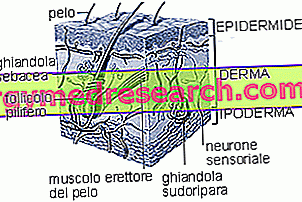Generality
First of all it should be pointed out that the appearance of a few isolated hairs is not enough, on its own, to diagnose hirsutism. Only the presence of excessive and diffuse hair must elicit the complex sequence of interventions for diagnosis and therapy that hirsutism requires.

It should also be kept in mind that hypertrichosis is often familiar, appears before the age of development and does not depend on androgens, although it can be stimulated by these same hormones. Usually, it is not very sensitive to antiandrogenic therapies.
In hirsutism, hair - compared to hypertrichosis - is denser, thicker, and the hair is pigmented. Finally, hirsutism has no family characteristics and is typically androgen-dependent.
Type of Hirsutism
Identification of the type of hirsutism and the cause that caused it
Regarding the nature of hirsutism, it is necessary to keep in mind that it may be of ovarian, adrenal origin, or the result of a hypersensitivity of the pilosebaceous follicle to circulating androgenic hormones, whose levels are however normal ( idiopathic hirsutism ).
The diagnosis is performed first of all by interrogating the patient (medical history) and observing all her skin, especially paying attention to the number of hair follicles present per centimeter of skin and to their degree of pigmentation (color).
The doctor must consider particularly important the information reported by the patient concerning the speed with which hirsutism has developed, the presence or absence of menstrual irregularities, the race and the use of particular drugs. An hirsutism that appeared in the age of development, with alterations in menstrual flows and increased ovaries (visible on ultrasound), point towards a polycystic ovary syndrome.
A long-standing hirsutism, with partial virilization of the external genital organs, must suggest a non-tumoral disorder of the adrenal cortex; while an hirsutism that arises in a sudden manner, with considerable intensity and evolutionary tendency must make one think above all of a tumor of the adrenal or ovary.
When hirsutism persists for a long time, it is quite extensive, tends to a gradual but slow accentuation, is familiar or on a racial basis and is not associated with alteration of menstrual flows, nor to acne, nor to seborrhea, we can speak of hirsutism idiopathic.
An hirsutism associated with obesity, sometimes in diabetic patients, can be traced back to an alteration of carbohydrate metabolism with increased insulin.
The appearance of mild hirsutism in pregnancy, on the other hand, is quite frequent.
Assessment of irsutism
In the diagnosis of hirsutism, the doctor must evaluate and identify particular and well-defined signs and symptoms that may have occurred in patients.
More specifically, observing the patient (clinical inspection), the first step consists in evaluating the type of hirsutism. Usually we follow a scale that evaluates the presence of hair in 11 body zones and assigns a score from 0 to 4 to each zone based on the entity of hirsutism.




